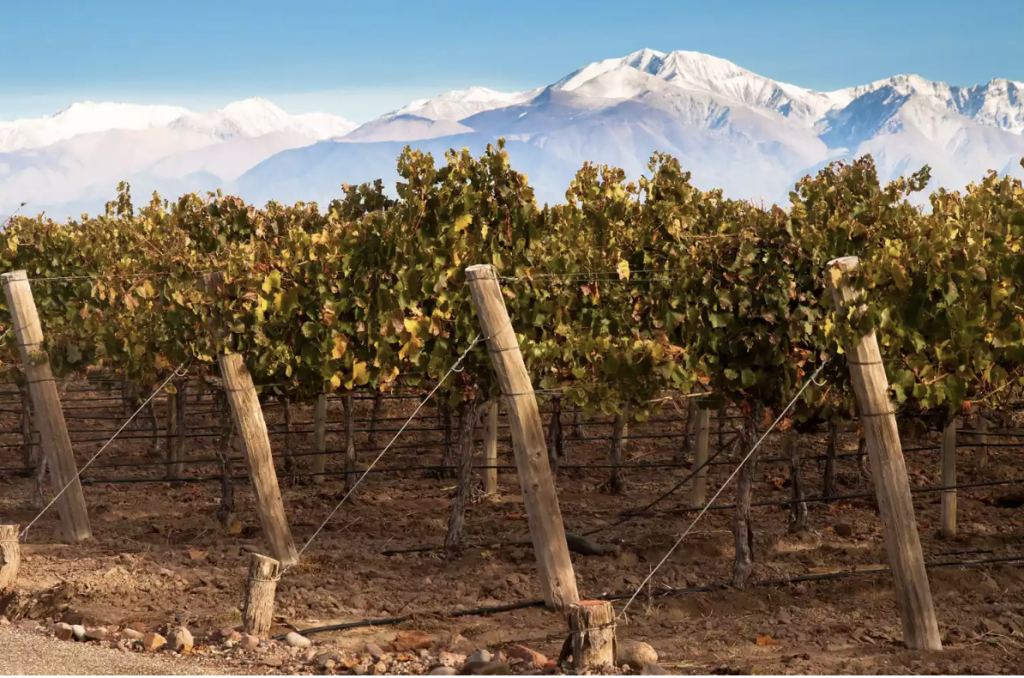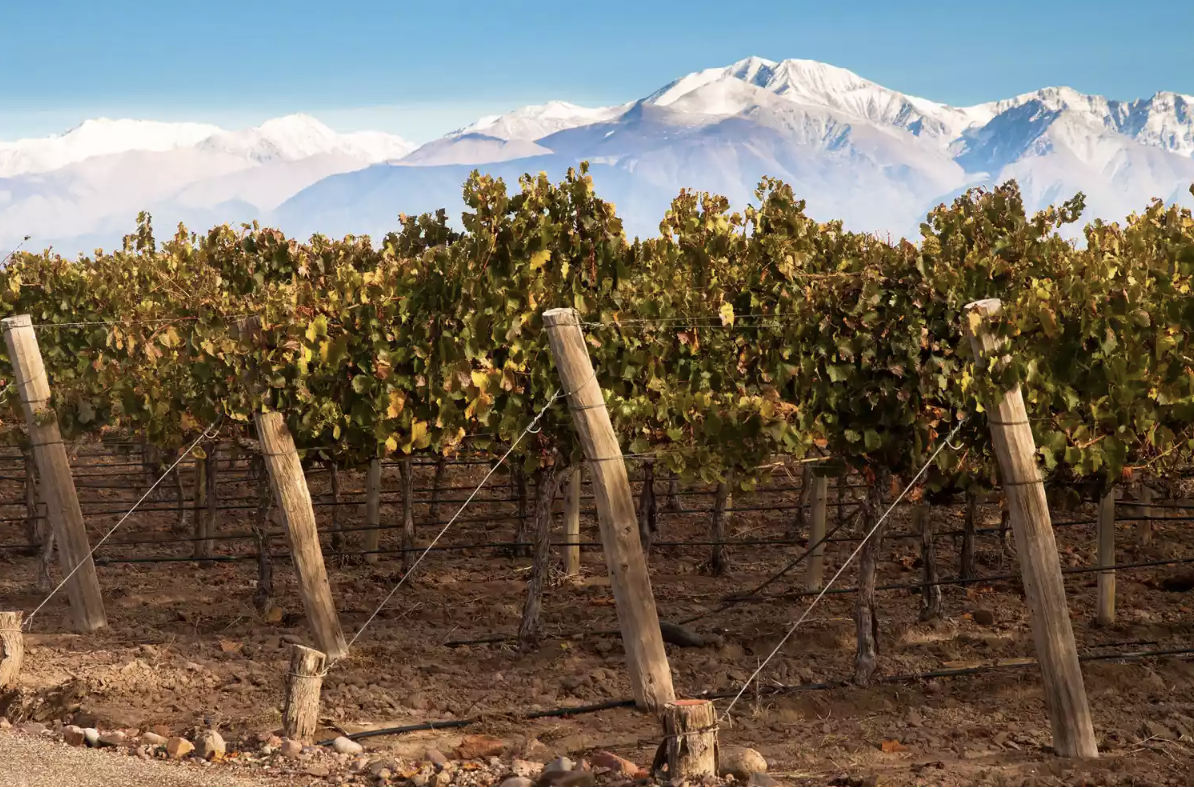(Food & Wine) Elevation prevails in Argentina thanks to the magnificent Andes, the north-south backbone of the South American country, whose 2,361 mile-length bestows diverse terroir upon the world’s fifth-largest wine producer. Centrally located Mendoza, whose vineyards are framed by icy peaks then irrigated by their meltwater, is key given that it produces 76 percent of all Argentine wine, and vineyards are cultivated between latitudes 23° and 45°. The country’s terroir includes the Andean foothills, as well as Mars-like canyons and mountains; Argentina’s highest vineyard tops out at a mind-blowing 10,922 feet above sea level. While vitis vinifera grapes have been cultivated since the mid-1500s, today’s pioneers are also exploring the Atlantic coast, prairies and cooler climes in Patagonia.
Home to 480,658 acres cultivated across 23,278 vineyards by 1,247 wineries in 51 regions, high-alcohol reds are no longer the norm in Argentina. Over the past two decades, winemakers have been interpreting this diversity to create world-class vintages that go beyond Malbec, the region’s seminal variety. Aromatic Torrontés, electric Chardonnay, exciting Pinot Noir, adaptable Cabernet Franc, fruity Bonarda, and revived interest in old-vine Criollas have been setting the pace for winemakers across the country. Popular styles include trendy skin-contact Pét-Nats and traditional method sparkling wine, as well as cellar-worthy and easy-drinking reds and whites. Argentina has two DOCs, both in Mendoza, but more than 100 Geographical Indications (IGs).
Thanks to its seductive Andean landscape, Mendoza is a year-round destination for aficionados and snow bums. Find out what to savor from Argentina’s fascinating, elevated terroir in this geographical guide.
For the rest of this please visit Food & Wine, September 2022.

